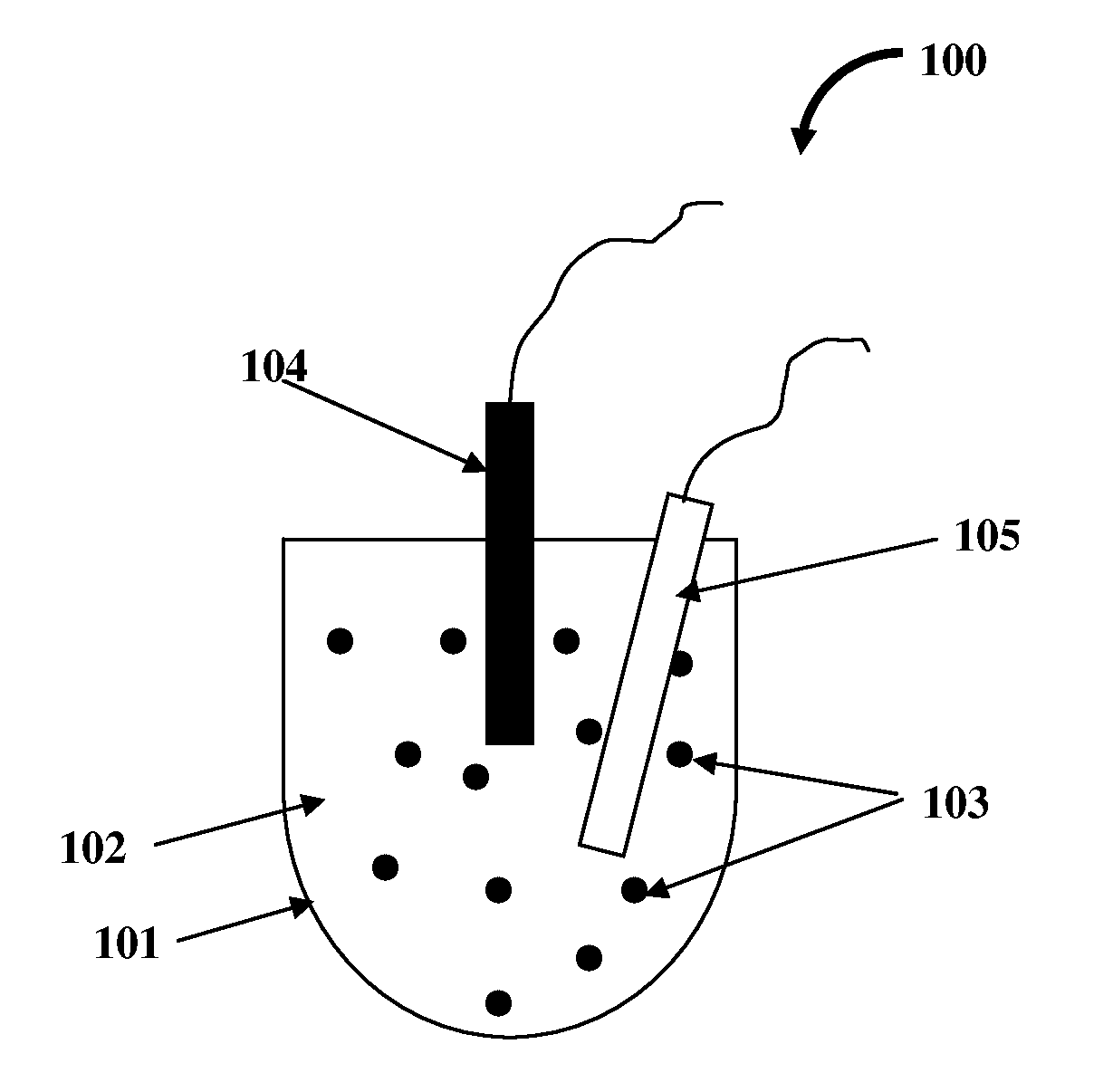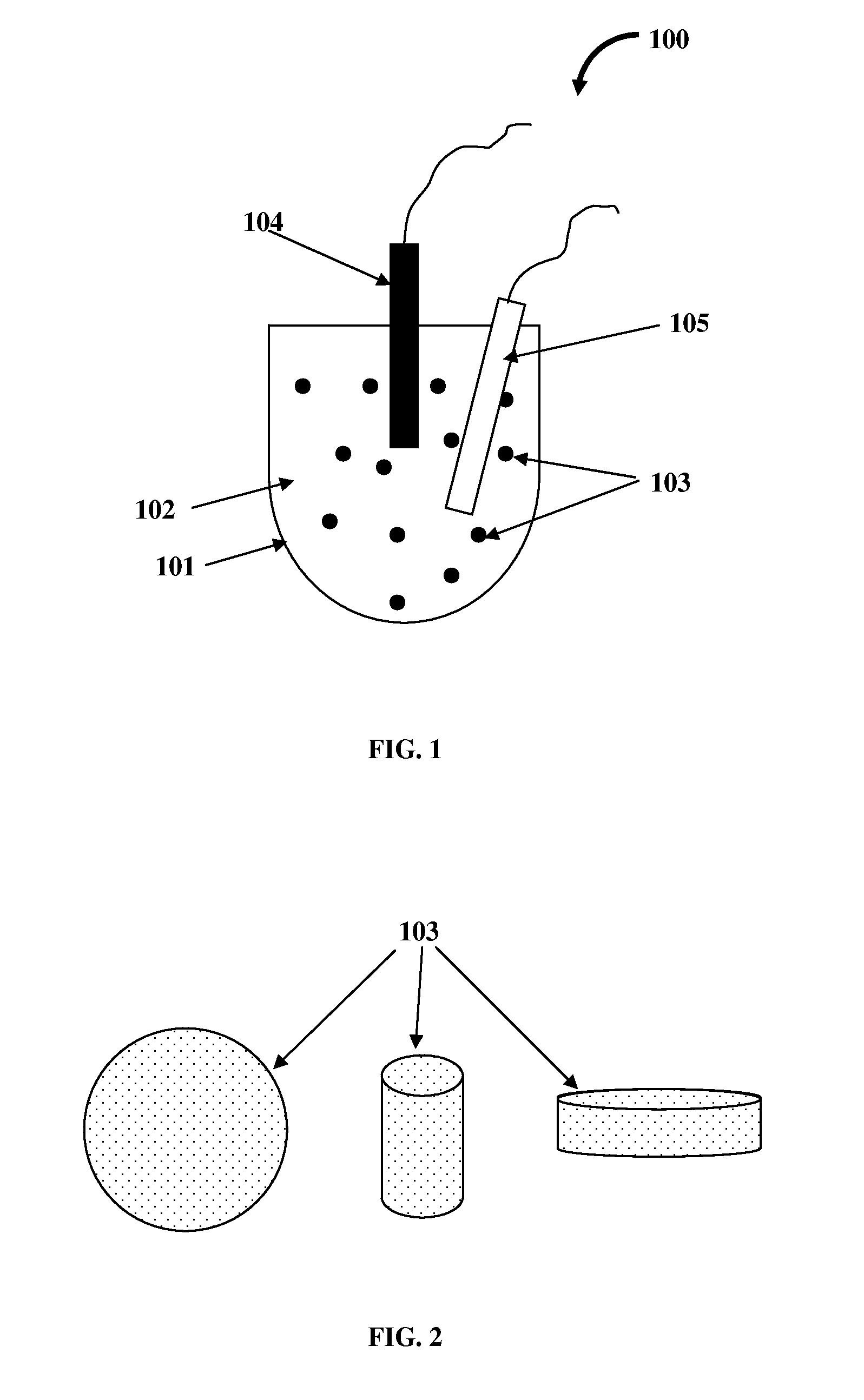Heat Transfer Fluid Containing Nano-additive
- Summary
- Abstract
- Description
- Claims
- Application Information
AI Technical Summary
Benefits of technology
Problems solved by technology
Method used
Image
Examples
example 1
[0045]A heat transfer fluid composition was prepared using the following steps:
(1) 500 ml of commercially available hydrocarbon based HTF, Dynalene MV (Dynalene Inc.), was obtained and placed in a glass beaker. The glass beaker was placed in an ice bath. A sample of the fluid was removed and tested for moisture content and thermal conductivity.
(2) 0.42 g of porous carbon nano-particles (from Y-Carbon, King Of Prussia, Pa.) of an average diameter 20 nm was added to the hydrocarbon fluid.
(3) A homogenizer and a wand type sonicator were placed in the fluid.
(4) Homogenization and sonication were carried out simultaneously for about 10 minutes.
(5) A sample of the heat transfer fluid was removed and tested for the nano-additive particle / agglomerate size distribution. An average size of 120 nm was obtained.
(6) A sample of the heat transfer fluid was also tested for moisture content and thermal conductivity.
(7) The moisture content of the heat transfer fluid was reduced from about 135 ppm t...
example 2
[0046]A heat transfer fluid composition was prepared using the following steps:
(1) 700 ml of commercially available silicone based HTF, Syltherm XLT (Dow Chemicals, Midland, Mich.), was obtained and placed in a glass beaker. The glass beaker was placed in an ice bath. A sample of the fluid was removed and tested for moisture content and thermal conductivity.
(2) 6.0 g of 13× molecular sieve (purchased from Aldrich Chemicals) was ground to 100 nm particles using a micronizer device. The resultant particles were added to the silicone fluid in the beaker.
(3) A homogenizer and a wand type sonicator were placed in the fluid.
(4) Homogenization and sonication were carried out simultaneously for about 30 minutes.
(5) A sample of the heat transfer fluid was removed and tested for the particle / agglomerate size distribution. An average size of 200 nm was obtained.
(6) The sample of the heat transfer fluid was also tested for moisture content and thermal conductivity.
(7) The moisture content of th...
example 3
[0047]A heat transfer fluid composition was prepared using the following steps:
(1) 500 ml of commercially available hydrocarbon based HTF, Dynalene HF-LO (Dynalene, Inc., Whitehall, Pa.), was obtained and placed in a glass beaker. The glass beaker was placed in an ice bath. A sample of the fluid was removed and tested for moisture content and thermal conductivity.
(2) 20 g of porous and fibrous carbon material (from Y-Carbon, Inc., King Of Prussia, Pa.) of average diameter 10 nm and length 1 micron (aspect ratio of 1:100) was added to the hydrocarbon carrier fluid.
(3) A homogenizer and a sonicator (wand type) were placed in the fluid.
(4) Homogenization and sonication were carried out simultaneously for about 1 hour.
(5) A sample of the heat transfer fluid was removed and tested for the particle / agglomerate size distribution. An average size of 500 nm was obtained.
(6) The sample of the heat transfer fluid was also tested for moisture content and thermal conductivity.
(7) The moisture co...
PUM
 Login to View More
Login to View More Abstract
Description
Claims
Application Information
 Login to View More
Login to View More - R&D
- Intellectual Property
- Life Sciences
- Materials
- Tech Scout
- Unparalleled Data Quality
- Higher Quality Content
- 60% Fewer Hallucinations
Browse by: Latest US Patents, China's latest patents, Technical Efficacy Thesaurus, Application Domain, Technology Topic, Popular Technical Reports.
© 2025 PatSnap. All rights reserved.Legal|Privacy policy|Modern Slavery Act Transparency Statement|Sitemap|About US| Contact US: help@patsnap.com


